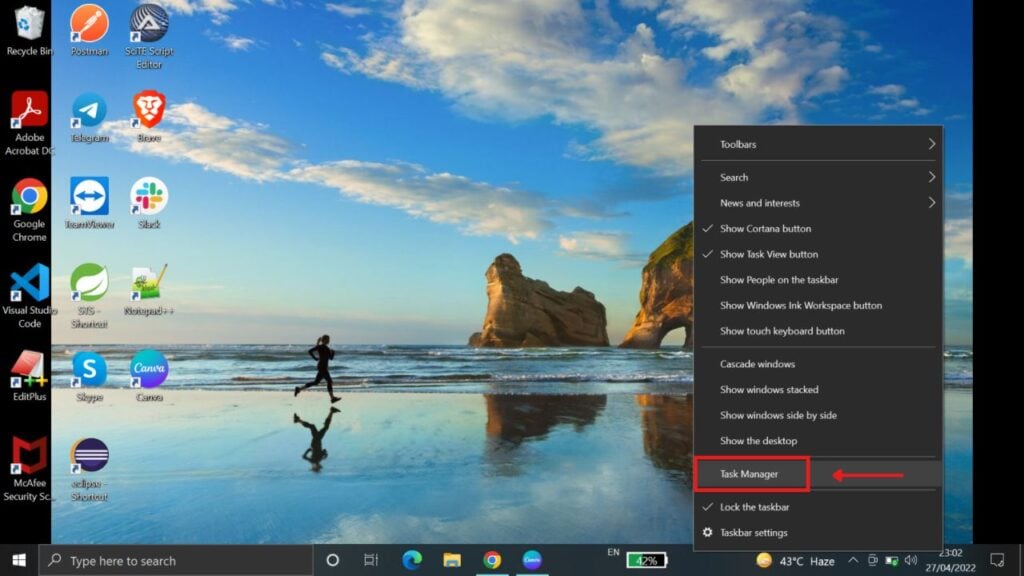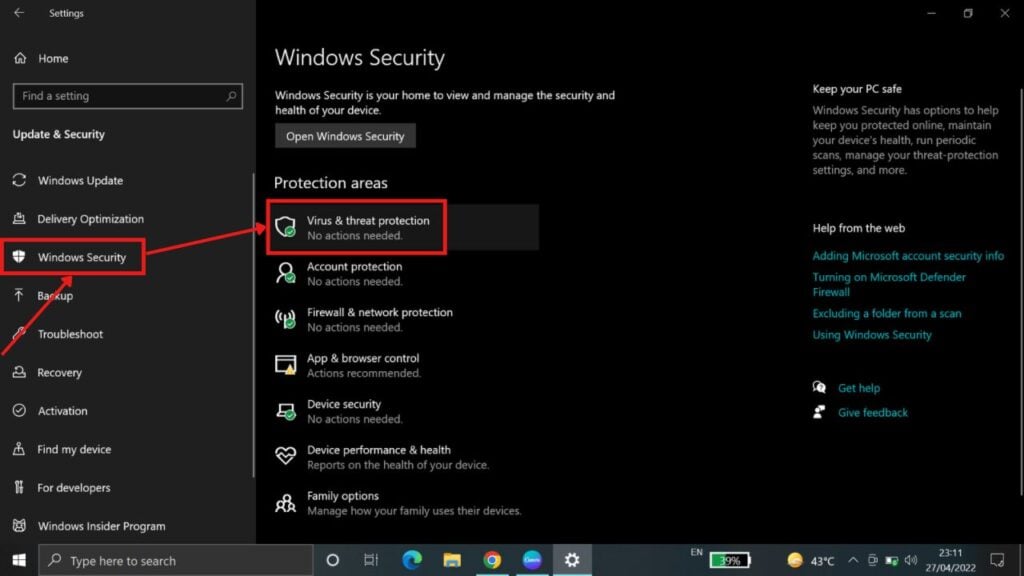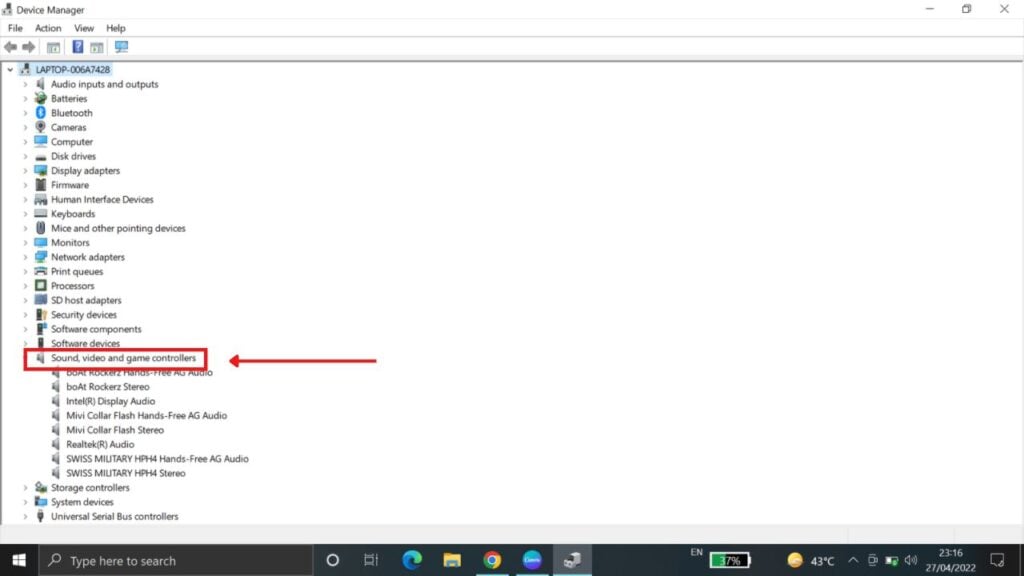Some processes run on our system but are unknown to us. Among many other Windows processes, Windows Audio Device Graph Isolation is another such process that usually runs as a background process on our system. The name of the process doesn’t give away much detail, and even the most frequent Windows users have only the slightest or no hints about it.
If you visit the Task Manager often, you’ll see this remote process running in the background. This mysterious program runs on your system and may put your CPU at high-performance risks. It can severely affect your system’s performance by draining the system resources.
As a beginner Windows user, it is exhausting to identify the rationale for your system’s wayward performance. But worry not, as this article will guide you to confirm if your system’s performance compromises because of the reserved Windows Audio Device Graph Isolation process. Read more about this ravenous process, its effect and how to manage it in our guide below.
Also Read: How to remove audio from video in Google Photos?
About Windows Audio Device Graph Isolation
Windows Audio Device Graph Isolation (AudioDG.exe) is a genuine Windows feature. Principally, it is the audio engine of your OS which allows the third-party applications to run sound media on your system. This process is technically known as Digital Signal Processing (DSP). It also allows you to perform advanced audio enhancements on your system, something the third-party vendors won’t offer. Since this process is isolated from other components on your Windows, it avoids any system crashes.
Features of AudioDG.exe
While this process is unknown to many users of Windows, it proffers some exciting audio manipulation features, to begin with.
- It runs as an independent process. Therefore, even if this process crashes, it won’t take down the whole system.
- It is a stable process under normal conditions, so there is minimal usage of resources.
- Supports the addition of special sound effects like bass boost, simulating echo, reverb, etc, during audio/ video editing.
- When working with sound effects, the audio output of your computer system will not compromise.
- The process is isolated, i.e. the process of digital signal processing is separate and isolated from other operations that run on the system to avoid system crashes.
- You have the upper hand to either enable or disable the audio enhancement features on any system or device.
Effects of comprehensive memory usage by AudioDG.exe
Though the process operates stably under normal conditions without affecting the system otherwise, there could be a few instances of high CPU usage. Sometimes, AudioDG.exe may use considerable resources, causing CPU and memory issues on your system. Here are a few impacts of this.
- It spikes up your % percentage consumption of system resources beyond the usual limits.
- As a primary audio engine, it takes up RAM when sound effects run on your system. Once the sound effects are complete, it uses minimal or no RAM at all.
- Third-party audio device manufacturers use a processor that utilizes this Windows process. If the device configuration is improper, it may cause elevated spikes in CPU resource usage. So When the process runs, it could cause a Blue Screen of Death (BSoD) error without any warning.
High CPU usage and degrading system performance could be frustrating issues. However, we can resolve the issue quickly as Windows Audio Device Graph Isolation is an independent isolated process.
Also Read: Windows theme tool resetting after restart: 8 Fixes
Is this process genuine or a virus?
In reality, this process is not a virus, but a part of the Windows system. However, hackers might try to infect your system with malware by disguising it as processes like one of these. If you feel your computer’s at risk, it is always valid to double-check your system for assurance.
AudioDG.exe could be the actual Windows process or a virus which goes by the same name as implanted by the hacker. Since it is a background process, it can be a potential cover for viruses or other malware. However, there will be no change in the process functioning if replaced by the virus. But eventually, it starts taking a toll on your system and would need replacement.
Legitimacy Test
If the process running on your system is draining your resources, you can legitimize it by reviewing the storage location. Use the below steps to validate the directory where this AudioDG.exe file is present.
Step 1: Right-click on the Taskbar and open the Task Manager from the menu.

Step 2: Navigate to the Processes tab. From the list of running processes, locate the Windows Audio Device Graph Isolation process.

Step 3: Right-click on the process and click on the Open file location option.

Step 4: Your file should be present under the given System32 directory.

If you navigate to a location other than the one specified above, you’re dealing with malware. You will need to take further steps to remove it.
Can you disable the process?
Yes, you can disable the process. But we recommend you not to disable it. By disabling the AudioDG.exe on your system, you’re manipulating your Windows to go on mute. And this is not a desirable approach.
In case you mistakenly disabled the process, try to restart your system. It will restore your setup, and the sound on your system will operate again.
If the Windows Audio Device Graph Isolation process consumes more resources and affects the functionality frequently, you can resolve it with our recommended fixes.
Also Read: How to check the graphics card in Windows 11?
4 fixes for High CPU usage issue caused by Windows Audio Device Graph Isolation
Here are a few possible fixes to resolve the High CPU Usage issue caused by the AudioDG.exe process.
Run a system scan to check for virus
If the Windows Audio Device Graph Isolation (AudioDG.exe) is present in a location other than the System32 directory, the file is a virus. You need to remove it from your system using a third-party application or Windows Defender full scan.
Follow the steps to remove the fake Windows Audio Device Graph Isolation file using Windows Defender.
Step 1: Open Windows Settings from the Start menu.

Step 2: Go to the Update and Security tile.

Step 3: Click on the Windows Security tab and go into the Virus and Threat protection option.

A new Security window will open.
Step 4: Under Virus & Threat protection, click on the Scan Options link.

You will redirect to the Scan Options screen with all the possible scan types.
Step 5: Click on the Full Scan radio button. Then click on the Scan Now button to start the system scan and remove unwanted files or threats.

The system will take some time to check the files. Some files may get quarantined or removed during the scan. Exempt these files to avoid a scan on them.
Disable the Special Sound Effects
As AudioDG.exe is highly involved in handling and managing the sound effects, it could be the root cause for the increased % percentage of resource consumption. You can disable these sound effects to fix the issue.
Step 1: Launch Control Panel on your system using the search menu.

Step 2: Categorize the list using the View by option and choose the Large icons option from the drop-down. Now click on the Sound link.

A new Sound window will open, displaying all the playback devices on your system.
Step 3: In the Playback tab, choose a device, right-click on it and choose the Properties option from the context menu.

A Speaker Properties window will open up.
Step 4: Go into the Enhancements tab and check the Disable audio enhancements checkbox.

Step 5: Click on the Apply button to save your changes.

Now you’ll not be able to use the advanced audio enhancements on your system until they’re enabled again.
Update your System Audio Drivers
Corrupt or outdated audio drivers can disable the sound on your Windows system. Combined with the High CPU usage issue due to AudioDG.exe, this could affect your movie or gaming experience. Therefore, you need to update your sound drivers to keep enjoying the music on your system.
You can either download the sound drivers for your device from the manufacturer’s website or do it manually.
Step 1: Launch the Device Manager tool from the Search bar.

Step 2: Locate and expand the Sound, video, and game controllers category.

Step 3: Double-click on the audio device to launch the properties window. Here, go to the Drivers tab and click on the Update driver button.

Step 4: In the Audio drivers update wizard, choose the Search automatically for drivers option to search and download the latest sound driver software version.
Restart your computer to install the latest driver versions. After restarting, check the Task Manager for resource consumption by this process.
Uninstall and Reinstall Skype
Skype, a video-calling application, seems to affect this issue for some unknown reasons. Try to uninstall the Skype application from your system and check if that fixes your High CPU performance issues.
To uninstall the application, follow the given steps.
Step 1: Bring up the Control Panel from the Search bar.

Step 2: Click on the Uninstall a program link under the Programs heading.

You will redirect to a new screen displaying the list of programs available on your system.
Step 3: In the given list, look for Skype, right-click on it and select the Uninstall option.

Step 4: If asked for a User Acceptance Control prompt, click on the Yes button. Once the application is uninstalled, you can re-check the increased CPU performance issues using Task Manager.
To reinstall the application, you need to download the setup from Skype’s official website and install it again.
Also Read: Audio format DTS and Eac3 not supported in MX Player: 3 Fixes






